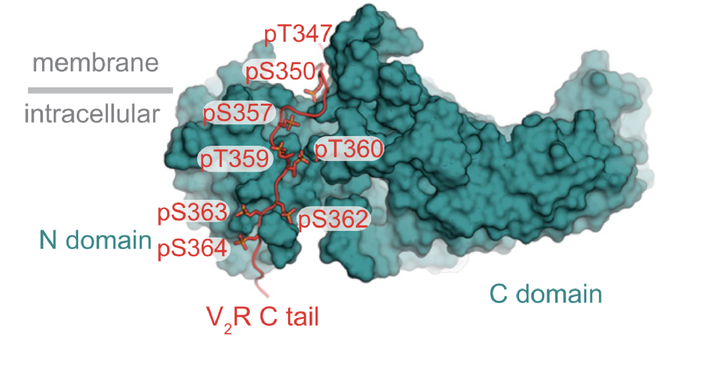
Abstract
Binding of arrestin to phosphorylated G-protein-coupled receptors (GPCRs) controls many aspects of cell signaling. The number and arrangement of phosphates may vary substantially for a given GPCR, and different phosphorylation patterns trigger different arrestin-mediated effects. Here, we determine how GPCR phosphorylation influences arrestin behavior by using atomic-level simulations and site-directed spectroscopy to reveal the effects of phosphorylation patterns on arrestin binding and conformation. We find that patterns favoring binding differ from those favoring activation-associated conformational change. Both binding and conformation depend more on arrangement of phosphates than on their total number, with phosphorylation at different positions sometimes exerting opposite effects. Phosphorylation patterns selectively favor a wide variety of arrestin conformations, differently affecting arrestin sites implicated in scaffolding distinct signaling proteins. We also reveal molecular mechanisms of these phenomena. Our work reveals the structural basis for the long-standing “barcode” hypothesis and has important implications for design of functionally selective GPCR-targeted drugs.